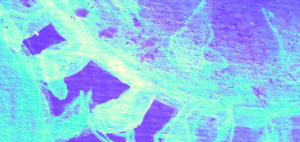New Study Points to Lab Origin of SARS-CoV-2

A new study in pre-print Endonuclease fingerprint indicates a synthetic origin of SARS-CoV-2 points to a synthetic origin of SARS-CoV-2, the virus at the root of the COVID-19 pandemic:
To prevent future pandemics, it is important that we understand whether SARS-CoV-2 spilled over directly from animals to people, or indirectly in a laboratory accident. The genome of SARS-COV-2 contains a peculiar pattern of unique restriction endonuclease recognition sites allowing efficient dis- and re-assembly of the viral genome characteristic of synthetic viruses. Here, we report the likelihood of observing such a pattern in coronaviruses with no history of bioengineering. We find that SARS-CoV-2 is an anomaly, more likely a product of synthetic genome assembly than natural evolution. The restriction map of SARS-CoV-2 is consistent with many previously reported synthetic coronavirus genomes, meets all the criteria required for an efficient reverse genetic system, differs from closest relatives by a significantly higher rate of synonymous mutations in these synthetic-looking recognitions sites, and has a synthetic fingerprint unlikely to have evolved from its close relatives. We report a high likelihood that SARS-CoV-2 may have originated as an infectious clone assembled in vitro.
Lay Summary To construct synthetic variants of natural coronaviruses in the lab, researchers often use a method called in vitro genome assembly. This method utilizes special enzymes called restriction enzymes to generate DNA building blocks that then can be “stitched” together in the correct order of the viral genome. To make a virus in the lab, researchers usually engineer the viral genome to add and remove stitching sites, called restriction sites. The ways researchers modify these sites can serve as fingerprints of in vitro genome assembly.
We found that SARS-CoV has the restriction site fingerprint that is typical for synthetic viruses. The synthetic fingerprint of SARS-CoV-2 is anomalous in wild coronaviruses, and common in lab-assembled viruses. The type of mutations (synonymous or silent mutations) that differentiate the restriction sites in SARS-CoV-2 are characteristic of engineering, and the concentration of these silent mutations in the restriction sites is extremely unlikely to have arisen by random evolution. Both the restriction site fingerprint and the pattern of mutations generating them are extremely unlikely in wild coronaviruses and nearly universal in synthetic viruses. Our findings strongly suggest a synthetic origin of SARS-CoV2.
Dr. Anthony Fauci has rejected any possibility that the virus came from a lab, running cover as far back as October 2020. Here he is being grilled by Dr. Rand Paul on this:





